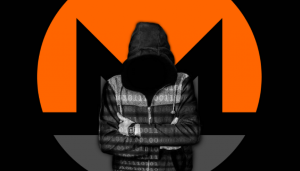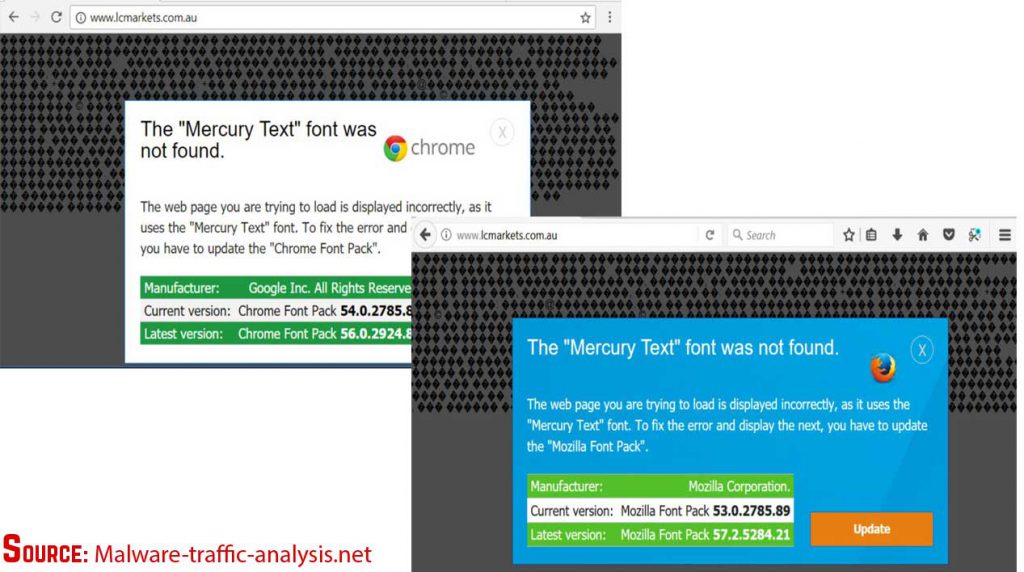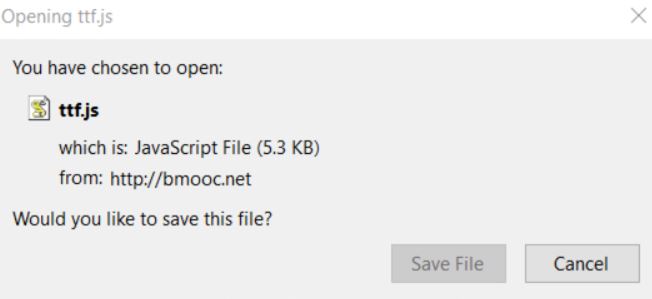 This article explains more about what is “Mercury Text” cryptocurrency miner infection and how to remove it and stop it from mining Monero.
This article explains more about what is “Mercury Text” cryptocurrency miner infection and how to remove it and stop it from mining Monero.
New cryptocurrency miner infection, disguising itself as the fake “Mercury Text” not found message has been reported to roam around the web infecting users without them even suspecting. The infection aims to use your computer’s essential resources in order to mine for the cryptocurrency Monero, which is completely anonymous. The virus may also perform other malicious activities on your computer system, such as obtain different information from it plus install other malware on it as well. If you suspect that your computer has been infected by the Mercury Text cryptocurrency miner, we recommend to read this article and learn how to remove it completely from your computer.

Threat Summary
| Name | Mercury Text |
| Type | Monero Crypto Miner malware. |
| Short Description | Runs a malicious executable which takes over your CPU and GPU usage to mine for the cryptocurrency Monero. |
| Symptoms | Runs a malicious process, named winhost.exe in Windows Task Manager which takes up a lot of the resources of the infected PC. |
| Distribution Method | Via a compromised web page. |
| Detection Tool |
See If Your System Has Been Affected by malware
Download
Malware Removal Tool
|
User Experience | Join Our Forum to Discuss Mercury Text. |

“Mercury Text” Miner – How Does it Infect
For the infection process, “Mercury Text” miner malware takes advantage of a fake web page, which claims that the “Mercury Text” font is not found on your computer. The page looks differently when visited from Mozilla Firefox and Google Chrome browsers:
When the user visits the page, according to the research at malware-traffic-analysis it automatically may prompt to download a JavaScript file, which poses as the questionable “Mercury Text” installation file.
However, in reality this JavaScript file connects to a remote host and downloads a malicious file going by the name of winhost.exe. It is the actual cryptocurrency miner file:

“Mercury Text” CryptoMiner Malware – Activity
When it has been activated on your computer, the winhost.exe file may run as a process on your Windows Task Manager. In addition to this, it may also create a scheduled task to run automatically, even if you try to stop it by ending it as a process.
The file’s primary purpose is to enlist your computer as a part of a mining pool and begin to use your Graphics Card resources as well as your CPU in order to mine and generate Monero crypto tokens for the wallets of the cyber-criminals who are actually behind this threat. This may result in multiple negative consequences for your computer, such as:
- It may become extremely slow.
- It may start to Freeze and even show BSOD (Blue Screen of Death) errors.
- If the virus remains for longer periods of time, it may begin to damage your components and break them eventually due to overheating them.
In addition to this, since it is based on a Trojan Horse, the “Mercury Text” malware may also:
- Steal your login details.
- Log your keystrokes.
- Steal financial information from your computer.

Remove “Mercury Text” CryptoCurrency Miner Completely from Your Computer
In order to remove this cryptocurrency miner malware, you can follow the removal instructions down below. They are specifically designed to help you delete all the malicious objects, created by this miner malware on your computer. In addition to this, experts recommend that users remove the “Mercury Text” malware automatically by scanning for it using an advanced anti-malware software which will make sure this malware is deleted from your computer completely and that you are protected against future infections as well.
Preparation before removing Mercury Text.
Before starting the actual removal process, we recommend that you do the following preparation steps.
- Make sure you have these instructions always open and in front of your eyes.
- Do a backup of all of your files, even if they could be damaged. You should back up your data with a cloud backup solution and insure your files against any type of loss, even from the most severe threats.
- Be patient as this could take a while.
- Scan for Malware
- Fix Registries
- Remove Virus Files
Step 1: Scan for Mercury Text with SpyHunter Anti-Malware Tool



Step 2: Clean any registries, created by Mercury Text on your computer.
The usually targeted registries of Windows machines are the following:
- HKEY_LOCAL_MACHINE\Software\Microsoft\Windows\CurrentVersion\Run
- HKEY_CURRENT_USER\Software\Microsoft\Windows\CurrentVersion\Run
- HKEY_LOCAL_MACHINE\Software\Microsoft\Windows\CurrentVersion\RunOnce
- HKEY_CURRENT_USER\Software\Microsoft\Windows\CurrentVersion\RunOnce
You can access them by opening the Windows registry editor and deleting any values, created by Mercury Text there. This can happen by following the steps underneath:


 Tip: To find a virus-created value, you can right-click on it and click "Modify" to see which file it is set to run. If this is the virus file location, remove the value.
Tip: To find a virus-created value, you can right-click on it and click "Modify" to see which file it is set to run. If this is the virus file location, remove the value.Step 3: Find virus files created by Mercury Text on your PC.
1.For Windows 8, 8.1 and 10.
For Newer Windows Operating Systems
1: On your keyboard press + R and write explorer.exe in the Run text box and then click on the Ok button.

2: Click on your PC from the quick access bar. This is usually an icon with a monitor and its name is either “My Computer”, “My PC” or “This PC” or whatever you have named it.

3: Navigate to the search box in the top-right of your PC's screen and type “fileextension:” and after which type the file extension. If you are looking for malicious executables, an example may be "fileextension:exe". After doing that, leave a space and type the file name you believe the malware has created. Here is how it may appear if your file has been found:

N.B. We recommend to wait for the green loading bar in the navigation box to fill up in case the PC is looking for the file and hasn't found it yet.
2.For Windows XP, Vista, and 7.
For Older Windows Operating Systems
In older Windows OS's the conventional approach should be the effective one:
1: Click on the Start Menu icon (usually on your bottom-left) and then choose the Search preference.

2: After the search window appears, choose More Advanced Options from the search assistant box. Another way is by clicking on All Files and Folders.

3: After that type the name of the file you are looking for and click on the Search button. This might take some time after which results will appear. If you have found the malicious file, you may copy or open its location by right-clicking on it.
Now you should be able to discover any file on Windows as long as it is on your hard drive and is not concealed via special software.
Mercury Text FAQ
What Does Mercury Text Trojan Do?
The Mercury Text Trojan is a malicious computer program designed to disrupt, damage, or gain unauthorized access to a computer system. It can be used to steal sensitive data, gain control over a system, or launch other malicious activities.
Can Trojans Steal Passwords?
Yes, Trojans, like Mercury Text, can steal passwords. These malicious programs are designed to gain access to a user's computer, spy on victims and steal sensitive information such as banking details and passwords.
Can Mercury Text Trojan Hide Itself?
Yes, it can. A Trojan can use various techniques to mask itself, including rootkits, encryption, and obfuscation, to hide from security scanners and evade detection.
Can a Trojan be Removed by Factory Reset?
Yes, a Trojan can be removed by factory resetting your device. This is because it will restore the device to its original state, eliminating any malicious software that may have been installed. Bear in mind that there are more sophisticated Trojans that leave backdoors and reinfect even after a factory reset.
Can Mercury Text Trojan Infect WiFi?
Yes, it is possible for a Trojan to infect WiFi networks. When a user connects to the infected network, the Trojan can spread to other connected devices and can access sensitive information on the network.
Can Trojans Be Deleted?
Yes, Trojans can be deleted. This is typically done by running a powerful anti-virus or anti-malware program that is designed to detect and remove malicious files. In some cases, manual deletion of the Trojan may also be necessary.
Can Trojans Steal Files?
Yes, Trojans can steal files if they are installed on a computer. This is done by allowing the malware author or user to gain access to the computer and then steal the files stored on it.
Which Anti-Malware Can Remove Trojans?
Anti-malware programs such as SpyHunter are capable of scanning for and removing Trojans from your computer. It is important to keep your anti-malware up to date and regularly scan your system for any malicious software.
Can Trojans Infect USB?
Yes, Trojans can infect USB devices. USB Trojans typically spread through malicious files downloaded from the internet or shared via email, allowing the hacker to gain access to a user's confidential data.
About the Mercury Text Research
The content we publish on SensorsTechForum.com, this Mercury Text how-to removal guide included, is the outcome of extensive research, hard work and our team’s devotion to help you remove the specific trojan problem.
How did we conduct the research on Mercury Text?
Please note that our research is based on an independent investigation. We are in contact with independent security researchers, thanks to which we receive daily updates on the latest malware definitions, including the various types of trojans (backdoor, downloader, infostealer, ransom, etc.)
Furthermore, the research behind the Mercury Text threat is backed with VirusTotal.
To better understand the threat posed by trojans, please refer to the following articles which provide knowledgeable details.




